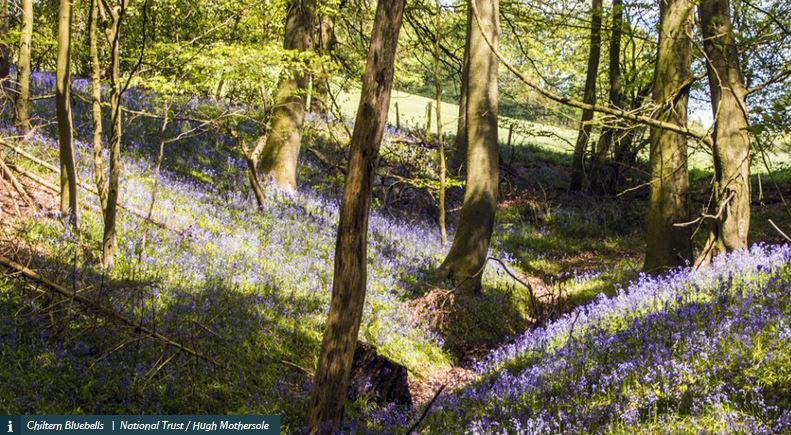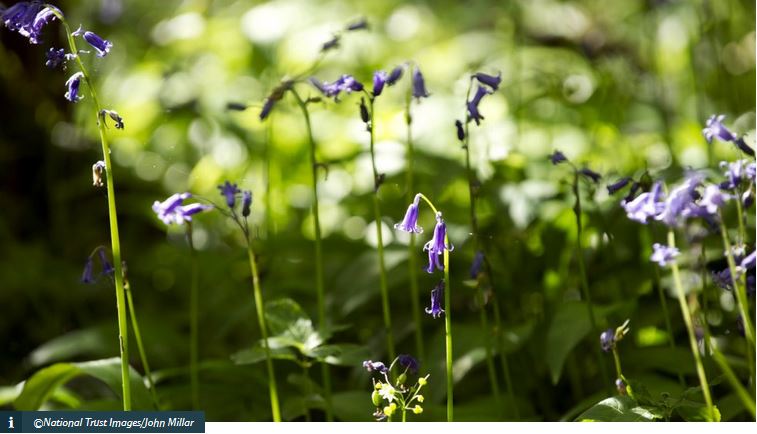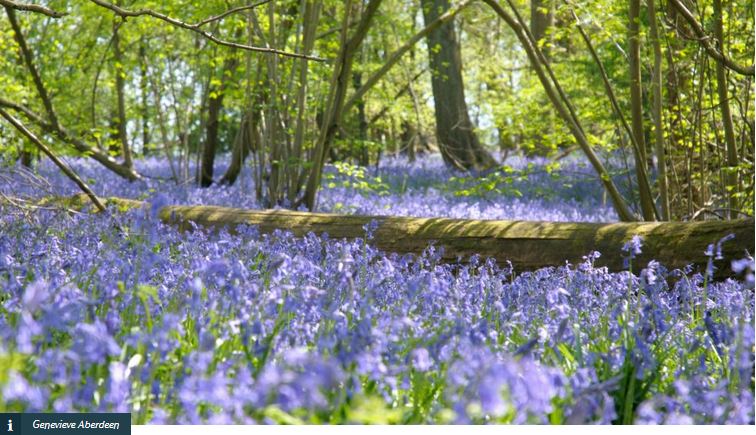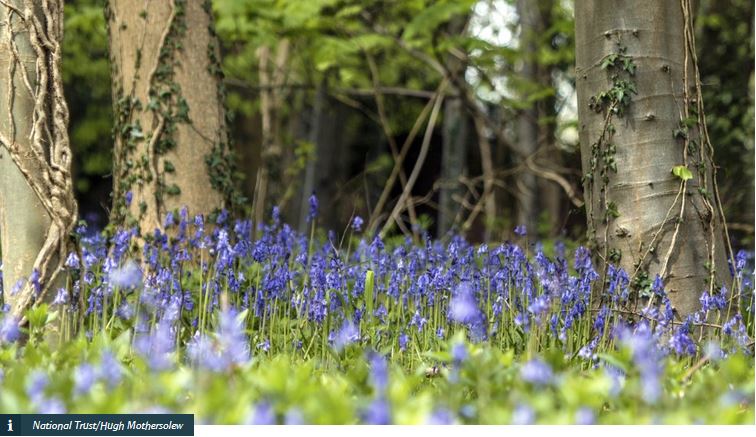Many of the National Trust staff and volunteers play a vital role in looking after the UK’s bluebell population, but we couldn’t do it without your support. A quarter of our woodland is ancient or semi-natural; the ideal habitats for bluebells to flourish.
Wild native bluebells like moisture in the winter and shade in summer. They can also grow in hedgerows and park or grassland, often following the line of an old hedge or where trees once stood.
Native bluebells are fragile
When you see them each year, faithfully pushing through the old leaf litter on sturdy stalks in their hundreds, it’s hard to believe they’re actually a fragile flower. They don’t like change or disturbance, preferring ancient woods where the ground has lain undisturbed for years.
Our gardening forefathers were aware of the difficult nature of native bluebells and introduced the more hardy Spanish Bluebell to their gardens around 300 years ago. However, Spanish bluebells did not remain in gardens and over the years have begun to hybridise with native flowers, producing tougher plants with dominant genes.
The main visible difference between the varieties is that native bluebells are slightly smaller, have narrow leaves, drooping heads, a violet bell-shaped flower and a delicate but distinctive fragrance. Spanish bluebells are wider-leaved, stand erect and have no scent. Their flowers have less of a bell and are a more ‘hyacinth’ blue.
Bluebell inspiration and myths
The bluebell has held a treasured place in the hearts of British people for centuries. It has been an inspiration to poets and writers such as Oscar Wilde, Emily and Anne Bronte, Gerard Manley Hopkins and Percy Bysshe Shelley.
It has played an influential role in folk culture and some of the names it has been given offer an insight. For instance, the earliest British botanists called them Crowtoes, but they’ve also been called Cuckoo’s Boots, Wood Hyacinth, Lady’s Nightcap and Witches’ Thimbles.
Many myths surround the bluebell, although for such a heart-lifting flower the folklore is rather gloomy. There was a belief that bluebells were used in witches’ potions. Others believed that anyone who wanders into a ring of bluebells will fall under fairy enchantment, or that anyone who hears the ringing of the flower’s bell will be visited by a malicious fairy and die soon after.
Practical use
We owe the British bluebell more than myth and sentiment, as it has also had practical uses throughout the ages. The bluebell’s bulb contains contain muselage and inulin which was used as a glue for fixing feathers to arrows and for bookbinding. The Elizabethans used the starch-like juice from the bluebell bulb to stiffen their fancy ruff collars.
Bluebells were not often used medicinally but legend has it that bluebells were used by 13th century monks to treat snakebites and lepers – something of a kill or cure remedy given that the bulb is poisonous.
On the other hand, researchers are looking into the bluebell’s highly effective animal and insect repellent properties and there’s even the possibility that certain bluebell extracts could be used to combat HIV and cancer.
How you can play a part in looking after bluebells
To most of us, however, a gorgeous spread of bluebells is an irresistible sight in spring. To show our appreciation, it’s the most tempting thing in the world to step into the blue for a photo opportunity, however, your feet could be doing more damage than you realise.
Bluebells have soft, succulent leaves that are particularly sensitive to being trodden on. Once the leaves are damaged, they are unable to absorb the sun and photosynthesise so they die back. In turn, this means they can’t put food back into their bulbs, reducing their ability to produce flowers and seeds.
You see it in popular bluebell woods where narrow tracks made by one person soon become wider and the bluebells end up in island-like patches instead of the blue carpet we all love.
Another reason to stick to designated paths in bluebell woods is that the bulbs become damaged when the soil is compacted from the weight of footfall.
The situation has become so critical in the most popular bluebell areas that in some places we’ve had to take decisive measures to control the numbers of people and where they walk, simply to preserve the flowers so that future generations can enjoy them.
Enjoy them with respect
This is not to say that we should stay away. Far from it. Bluebells are an important and essential part of our natural heritage, a welcome sign that spring is well under way and the warmer days of summer are not far off. As long as we treat them with respect, we’ll be able to enjoy our blue woodlands for many years to come.







